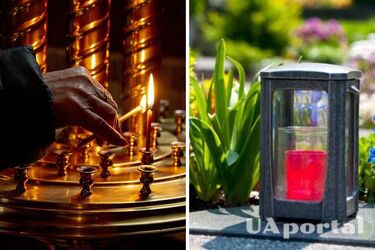Radonitsa 2023: traditions and what is forbidden to do on the memorial days after Easter

After the celebration of the Resurrection of Christ, Orthodox Ukrainians celebrate memorial days, which are also called wires, provodky, graves, or Radonitsa. The entire second week after Easter is considered a memorial week when relatives come to the graves of their deceased loved ones.
Read also: What is forbidden to do at the cemetery
Traditions and History of Radonitsa
Ukrainian regions have their own traditions, but in general, this year's Memorial Monday falls on April 25. Our ancestors believed that 8 days should pass after Easter in order to celebrate Radonitsa or Send-off on the 9th day. However, people often come to the graves on weekends.
The tradition of celebrating Radonitsa dates back to the pagan era and is associated with the cult of ancestors. The word "Radonitsa" means "spring joy". Our ancestors believed that the dead rejoice when they are remembered with a kind word and are not forgotten. After the introduction of Christianity, pagan beliefs intertwined with religion, and memorial days began to be celebrated when Radonitsa was celebrated before. However, Christianity condemns any joy and merriment on this day.
Despite this, there is no need to grieve for the dead on Radonitsa. On the contrary, one should rejoice that the living remembers them. In Christianity, one should also rejoice that Christ is risen and that life has conquered death, but this should be done with more restraint. At memorial visits to the graves, people bring consecrated Easter cake and Easter eggs, and light a candle.
What not to do on Radonitsa and folk signs
But there are a few restrictions during the wake. For example, it is not advisable to commemorate the dead with alcohol. You should also not do physical labor, laundry, sewing, cleaning, planting a garden, or quarreling and shouting.
Instead, you should go to church, order a memorial service, and pray for the souls of the deceased.
There are several folk signs on the day of Radonitsa. For example, if there are frosts on the night of Radonitsa, you can expect a good harvest. If the sky is crimson in the morning, rain and wind can be expected in the afternoon. It is also said that if you see a new moon on Radonitsa, it means that the next harvest will be good, and rain on this day is good news.
As a reminder, we have already written about what you can and cannot take to the cemetery on memorial Day.
If you want to get the latest news about the war and events in Ukraine, subscribe to our Telegram channel!
